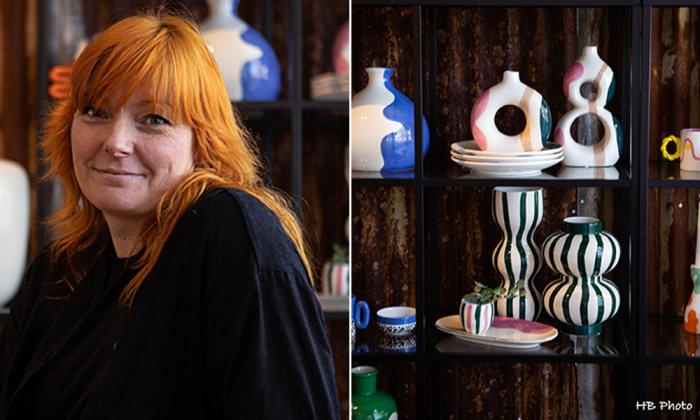
Tell us about ACagency – how did it all start?
ACagency started in 2015 as a fashion agency. I started by helping smaller brands in the fashion industry enter the Swedish market. Over time this has taken a turn to the point that I now only work with interior design and gift items, which I think is the absolute best part. In March 2022 I sold my small agency (including myself) to Lund-Stougaard Aps in Denmark and thus ACagency by Lund-Stougaard AB came into existence. It has been extremely important to me because instead of me doing everything myself, I am now part of a team that helps each other. We have a B2B platform that is super easy for the customers and we have a back office in Denmark, which allows me to concentrate 100% on what I find most enjoyable, the customers!
What kind of products do you represent and what market do you target?
We represent various brands in interior design and gift items on the Swedish market. For us, it is important that the brands we work with have a little edge. It can be anything from functional kitchen items with a humorous touch, vases in cheerful colours in an age when everything is brown and beige to durable bags with invisible features. It simply has to be brands that are fun to work with and that make people happy.
What are your top three tips for success in your industry?
I don’t have a recipe for success as it takes hard work, but these three have worked for me.
– Be yourself! The most important product you have as a seller is yourself. We are human and if you make a mistake, that’s okay, but take responsibility for it! And believe in yourself, you can do this!
– Be honest! This does not only apply to work but you will generally get further with honesty and sincerity. You have to be that as a friend, colleague and business partner to your customers. I want the best for my customers and not just sell to them, I want a long-term collaboration. I appreciate the clients I’ve had since I started in 2015 so much, and many I still have a strong relationships with. Some are still customers even though I don’t have the same products as before. I think trust in you as a seller is incredibly important.
– Show your customers that you appreciate them, and here I don’t just mean the person who buys, but the entire team in the store in question. One must remember that it is the whole team that sells your products, not just the buyer.
What would you say is your biggest asset and your biggest challenge?
Our biggest asset is that we don’t just sell a product, but we try to help with everything we can. This means that I sometimes stand in a warehouse and help clean up the assortment if that’s what I can do to help my customer. We participate in customer days and hold courses about our brands and what they stand for if the customer needs them.
Our biggest challenge right now is probably no different from our colleagues; the market is incredibly unpredictable and you never really know what will happen from day to day. It’s not really something that we can influence that much, what we can do is think outside the box and not panic. I try not to lock myself into a specific customer segment, but try to think of opportunities in other areas than the ones we are used to so that I don’t just go to interior design stores, but also to other types of stores where we can fit in. Customers often want to expand their customer segment and thus create more traffic in the stores.
The issue of sustainability is high on the agenda today, how is it in your industry and how do you work with sustainability?
Sustainability is an important issue for us. It plays an increasingly important role when we choose new brands, for example, we represent brands that try to have as low a CO2 footprint as possible. We have suitcases made from recycled plastic bottles, where you can scan them and see where the bottles were collected. We also have beverage bottles that are certified CO2-neutral and we also have a brand that recycles wine bottles into really nice water/whiskey glasses. It is also important to us that the suppliers do not “pack air” when they send deliveries, that is to say that they adapt the packaging to the product and the same applies when we ourselves send out to the customers. In the same way regarding packaging, if the products come in packaging that contains wood, it is important to us that it can be tracked, this applies both when we receive and when we send. Internally, we think carefully about our own CO2 footprint, and we hold more meetings digitally instead of driving around the country. We are now also using a tool to map our own CO2 footprint so that we can internally get our CO2 footprint as low as possible.